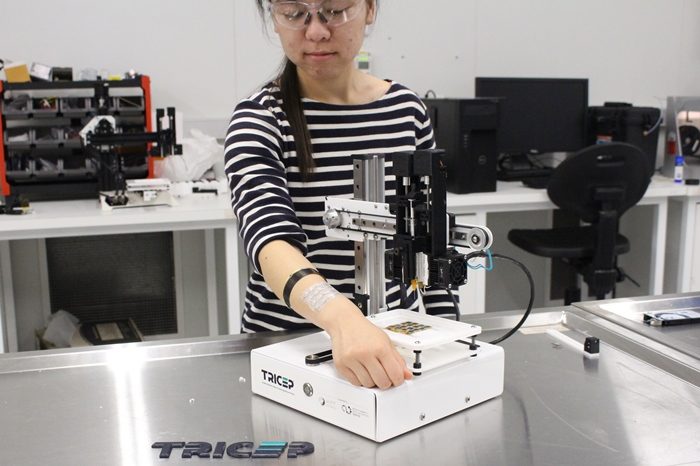News
3D printing bone tissue
Jun 28 2022
Researchers at the ARC Centre of Excellence for Electromaterials Science are leading the way in utilising thermoelectric (TE) generators as a potential power supply for synthetic skins.

A team led by ACES Chief Investigator Prof Jun Chen, including Dr Ruoming Tian (UNSW), ACES Early Career Researcher Yuqing Liu and Professor Kunihito Koumoto (Nagoya Industrial Science Research Institute), has released a new protocol to bioprint compatible power supply for electronic skins (E-skins).
E-skins are artificial skin-type electronic devices, which hold great promise for the establishment of wireless health monitoring systems, and in applications in limb prostheses, soft robotics, and artificial intelligence. These synthetic skins can mimic the sensory and self-healing functionalities of natural skin, monitor vital signs, and deliver diagnosis remotely.
To date, however, the lack of ultrathin, stretchable and reliable power sources has dramatically hindered the commercial application of E-skins. New research by ACES researchers in conjunction with the University of New South Wales, the Nagoya Industrial Science Research Institute (Japan), King Abdulaziz University (Saudi Arabia) and Kyung Hee University (Korea) proposes that the continually released thermal energy from our body provides a plausible solution to power the miniaturised sensors and circuits in E-skins.
While most traditional TE generators are rigid, the team has proposed a device design where formulated inks are printed directly on a soft biocompatible substrate with pre-patterned electrodes that provide an opportunity to capture body heat for energy purposes.
The protocol utilises inks that can be tailored and customised to allow the production of a flexible, ultrathin generator that can conform well to the skin to potentially enable seamless integration into existing E-skins. The device features an induced thermal barrier and heat absorber, which will enable the generation of temperature gradients along TE leg and convert body heat into electricity.
ACES CI Professor Jun Chen said the team had discovered some exciting advancements in creating a flexible, effective TE generator to power E-skins.
“Our proposal to use ink-based materials allows the integration of power supply and energy storage in a cost-effective way, and is a step in the right direction towards the field of wireless health monitoring and diagnosis,” Jun said.
“In particular, we found that solution-processable semiconducting materials can be formulated into inks and adapted for scale-up production.
“Further, the solution processability of these materials allows for the ink parameters such as active material loading, shear viscosity and surface tension to be carefully controlled, and provides solutions to some of the current barriers in TE devices in terms of flexibility, material degradation and low-power generation.”
This paper is part of the June 2019 issue of Joule.













